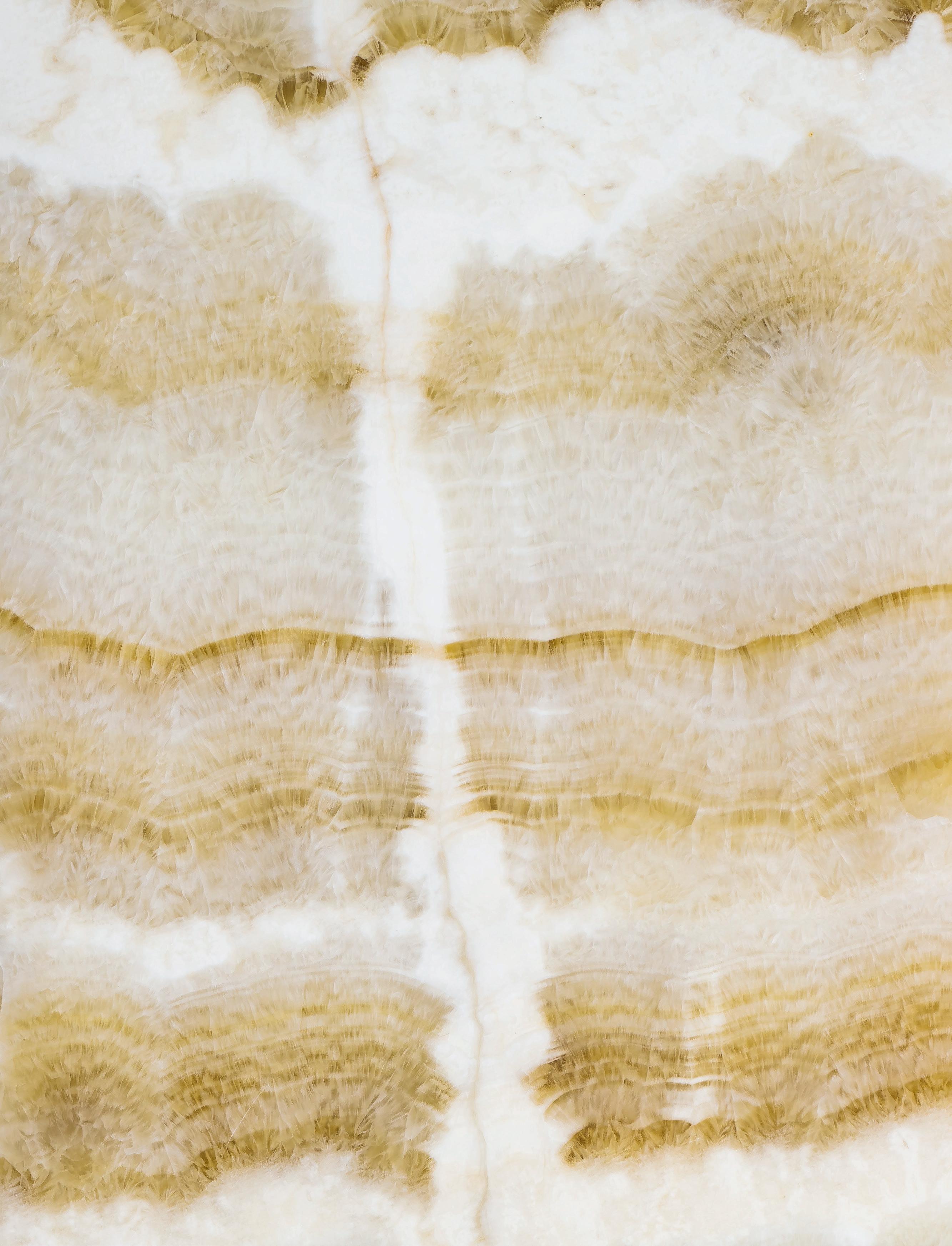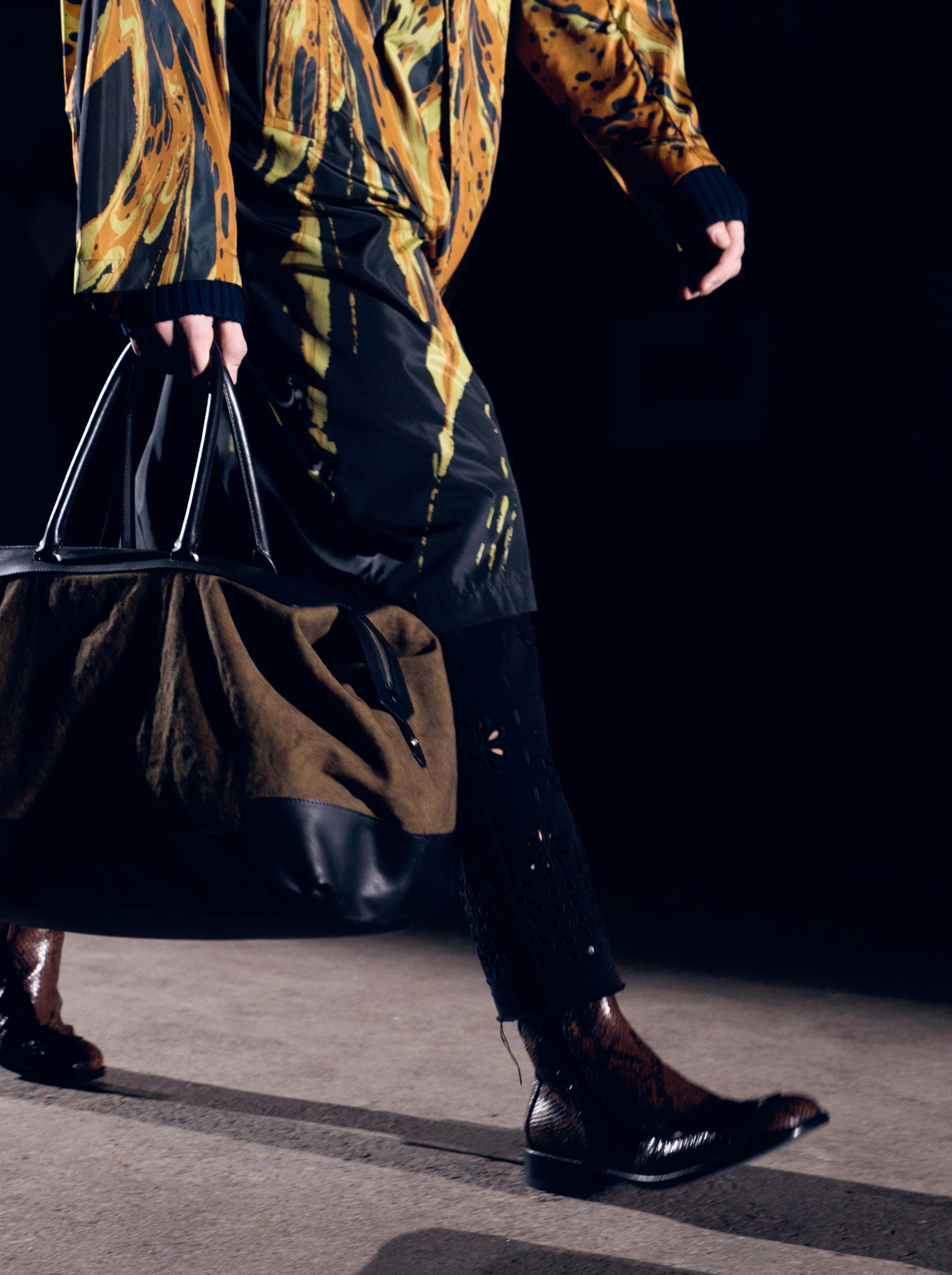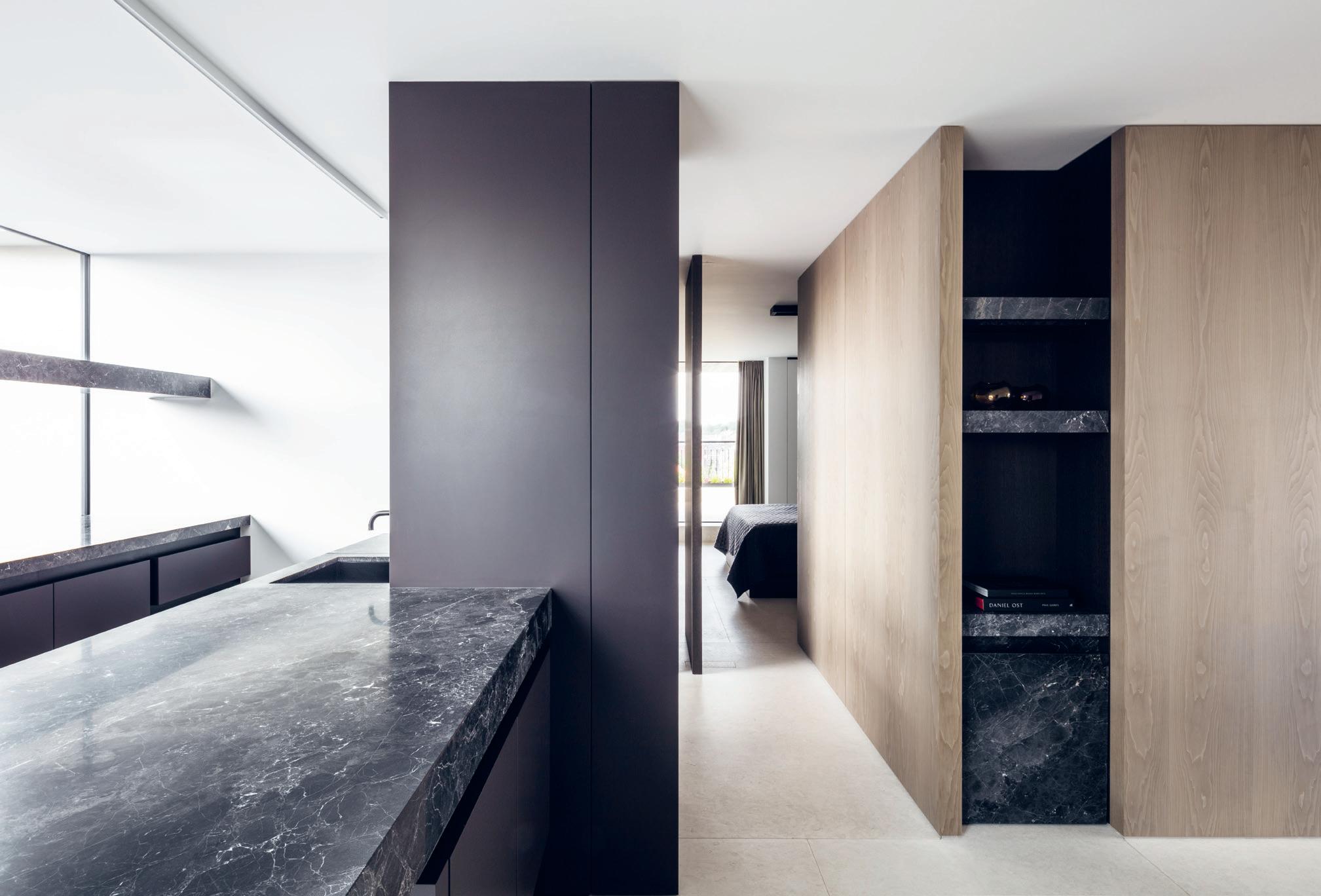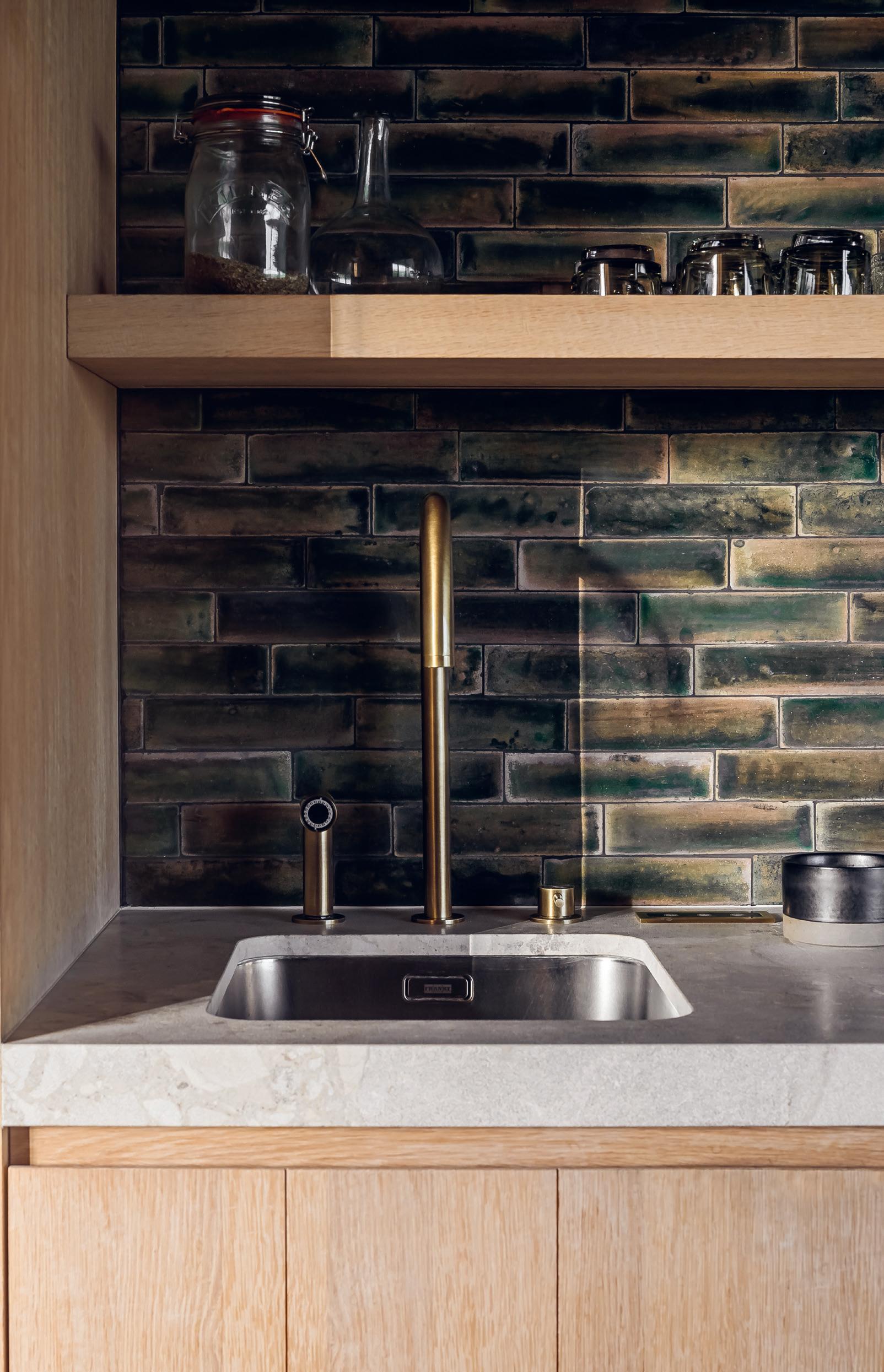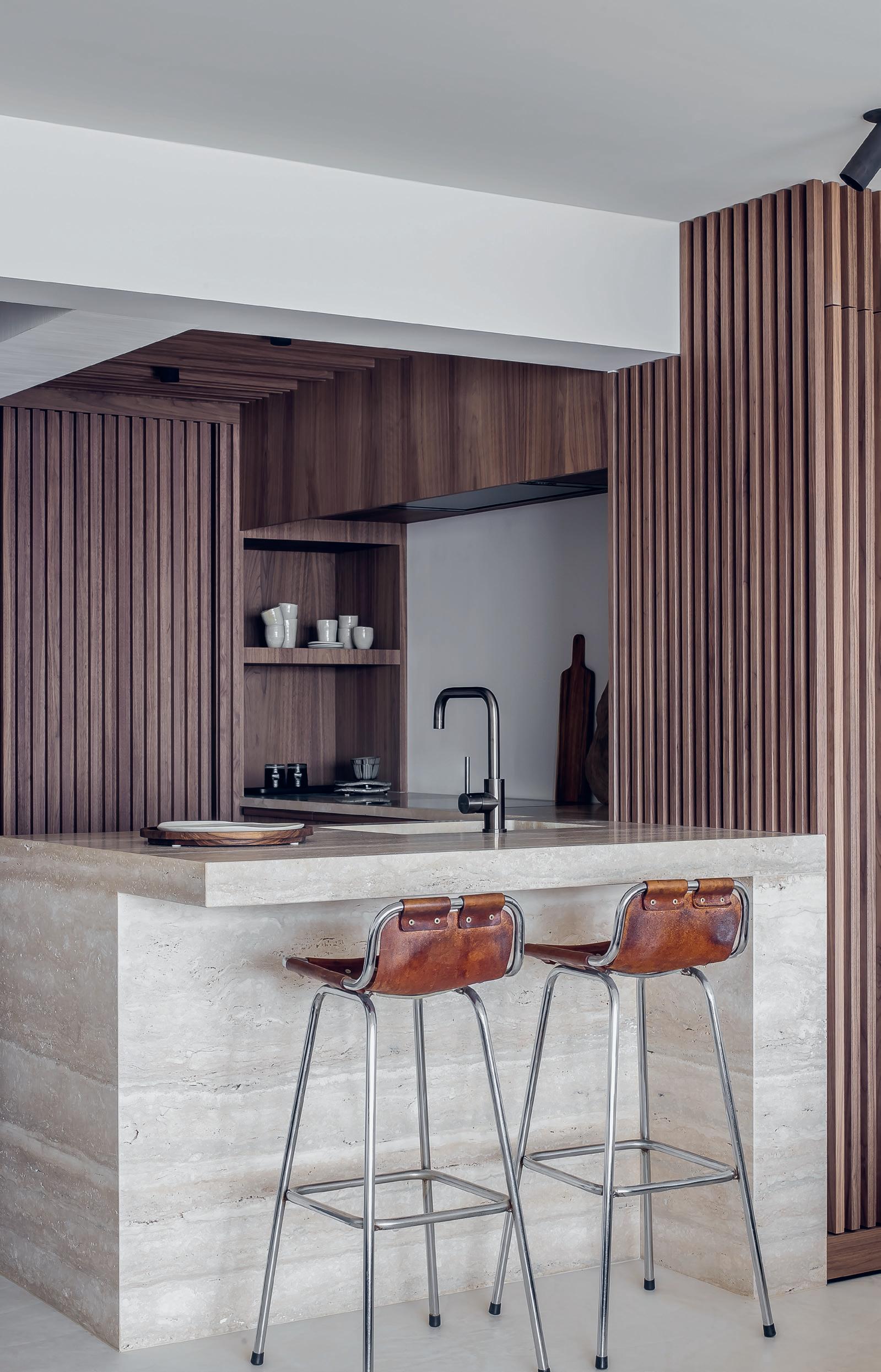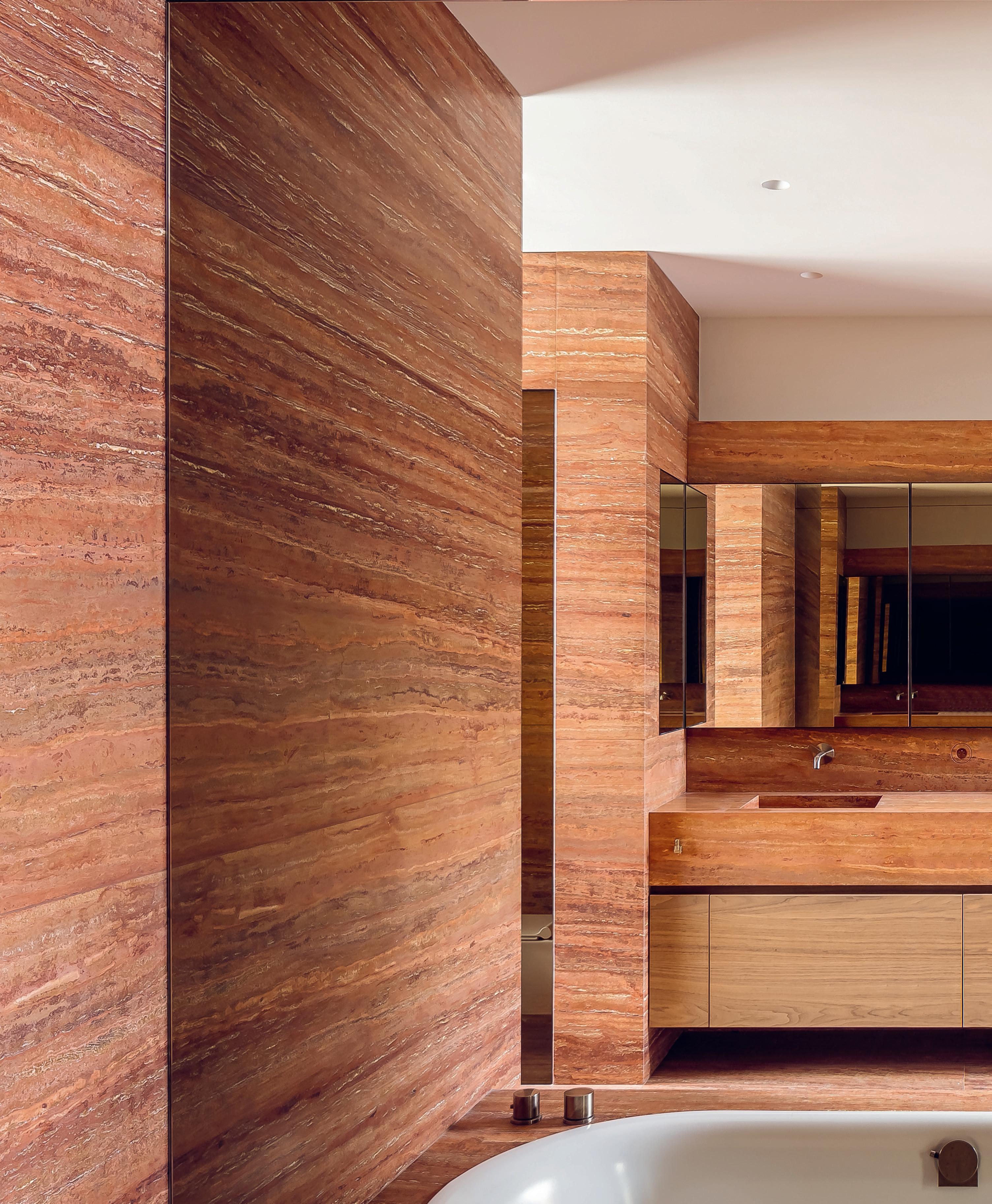TANGUY VAN QUICKENBORNE
Tanguy Van Quickenborne’s personal appreciation for art, design, and architecture has revitalised Van Den Weghe, the marble and stone processing company he took over years ago. Through the discovery of experimental techniques, as well as his collaborations with cutting-edge artists and designers, Van Quickenborne is carving a new path in stone, with more still to come.
Let’s start with how and when your career in the marble industry began.
After studying arts, languages, and business administration, I wanted to do something for myself, like take over or start a business. I was open to anything. It was pure coincidence that my father knew the owner of Van Den Weghe, and that they wanted to move on. So I started working for the company about twenty years ago, with the idea of taking over after a couple of years.
How do you find and source natural stone?
We visit fairs and wholesalers. It’s a push and pull: we offer new stones, but architects also ask us to find something they’ve seen. Sometimes particular stones are not processed anymore, but we always keep our eyes and ears open for new marble and stones to offer to clients and architects. I find inspiration in visiting art fairs, artists’ studios, cities, churches…
Is there a type or style of stone that you see trending amongst designers?
Firstly, there’s the fashionable colours. It started with green and pink, then came yellow, and now blue again. We keep up with those trends and I can somehow feel which colours will be in fashion. Secondly, there’s the contemporary and sober designs, with grey, white, and black. Those two trends are always there.
What is your favourite type of marble?
Two years ago, I redid my home and used Breche, which forms when rocks come together after an eruption. Really interesting. I also like colourful stones, like yellowish stones with orange, and I enjoy classic travertine or Carrara.
How do you feel the marble industry has changed over the last few decades?
With 3D technology and AI, renderings are so overly perfect that people expect the results to be exactly the same. Sometimes, clients cannot deal with the fact that the stone encapsulates millions of years of history. They will even ask me to move the marble vein here or there. Nature is so much more powerful than us. Why would you try to steer that into what you want? Natural occurrences are such a nice thing to have in your interior.
Your interest in art has resulted in an extensive collection. Which works of art are particularly valuable to you?
I bought my first piece at the age of 21, for no more than 50 euros. I started with my own generation and as the budget grew, I added works by artists like Andy Warhol and Richard Nonas. I have an Esther Kläs, which I bought from Xavier Hufkens. And a series of works by Darren Bader. He is one of my favourites – the new Marcel Duchamp, I’d say. And I was one of the first people to buy a piece from my good friend Kasper Bosmans about twenty years ago.
What historic work of art or architecture, composed of marble, would you recommend seeing?
Last Christmas I went to the Yucatán Peninsula in Mexico and visited the archaeological sites there. I was in awe of what people did there with such limited resources or means of transport. As for artworks, I’d say Ryan Gander’s works are very good, and of course all the classical statues and sculptures.
Lastly, in what way has your passion for art shaped your company?
Van Den Weghe has become more international and high-end, with special projects by artists and designers. The layer we add is about aesthetics, about the connection to art, knowledge of (art) history, and architecture. We also took over a few other businesses in the field – such as tiles and textured paintings – to expand our offering. This is what sets us apart.
DRIES VAN NOTEN
Dries Van Noten is a world-renowned fashion designer who rose to fame for his exquisite collections composed of colourful prints and flawless craftsmanship. After 38 impeccable years of running the successful fashion brand he built from the ground up, the Belgium-based designer has recently stepped down as creative director. Today, Van Noten continues to contribute to the brand in between his travels and time in the garden.
Can you tell us where you grew up and what pivotal moment contributed to your success?
I was born in Antwerp. My family owned fashion stores and the idea was that I would take over, but I preferred to design fashion instead. My father was quite cross about that, so I had to work to pay for my studies, and built my company all by myself. I was part of the Antwerp Six, which was an informal group of different Antwerp designers. We studied together and managed to put Belgium on the international fashion map. Little by little, my fashion line kept growing. Fashion is very demanding. You have to work like crazy, seven days a week. So last year, I took a step back. I’m still connected to the brand, but I don’t design the collections anymore.
When designing new collections, how did nature influence your work?
Nature is very important to me. I live in the countryside and I’m a gardening addict. But when I was young, my father forced my mother and I to work in the garden, which I hated. It was the 60s and early 70s and David Bowie was on the television, which I found far more interesting. But little by little, gardening came back into the life I share with my partner. Fashion is everything a garden is not. For me, nature was an abstract concept that I would then translate into my collections.
Can you tell us about any collections that directly reference marble or stone?
We did a lot of prints that were inspired by marble. It’s a technique called marbling where you use oil and water on paper to imitate a marble effect. In the last collection
I made, we worked with a small Japanese atelier that applied the same marbling techniques. It was fantastic. That was my last collection: the men’s collection Summer 2025, which is now in stores.
The deconstructed marble floor in Galerie Malaquais is amazing. What influenced the store’s design and how does marble fit into the overall narrative?
For the stores, we completely adapt to the city and building where they’re located. I don’t like the idea of having the same stores all over the world. In Galerie Malaquais, we decided to have these big slabs of broken marble, inspired by a friend who made furniture for us. The idea is that you have this counter between the perfect slabs of marble with onyx tops, and the broken marble to simulate a used, antique feel.
In what other ways have you used marble within your home or the business?
My partner and I love marble, so you will see a lot of it in our homes. Antique pieces of marble that were put together again, for example. We also have a marble floor from the 17th century. For the New York store, we’re working with a Belgian artist called Ben Storms, who makes huge cushions in the most beautiful marble. Fascinating.
During your career, did you ever experience a creative block? And how did you work through it?
In fashion, you have to deliver four collections a year, so you don’t get the chance to have a creative block. Fashion is very strict – it’s a bit of a machine. So you have to show your collection, even if you’re unhappy with it. The good thing about fashion is that, a few months later, you can start over again.
How do you spend your days after stepping away as creative director?
I’m still involved in the store designs. We’re opening stores soon in Tokyo, London, Paris, Brussels, and Milan. And I still advise on the collections. I’m also working on my own project, which I can’t talk about yet.
pp. 70-73
Private home – Knokke
Design: Marie Stadsbader
Material: Travertino Classico
pp. 74-79
Project Velasquez – Ghent
Design: Glenn Sestig Architects
Materials: Travertino Classico, Crema Macedonia, Argos Black
pp. 80-81
Private home – Waregem
Design: Wilfra
Material: Travertino Titanium Light
pp. 82-85
Project Sunset – Ghent
Design: Britsom Philips Architects
Material: Pocahodas Honed
pp. 86-91
Project Norah – Deurle
Design: Glenn Sestig Architects
Materials: Stoccato, Crema Macedonia
pp. 92-95
Private residence – Paris
Design: Atelier MKD
Material: Travertino Titanium
pp. 96-99
Restaurant Bablut – Knokke
Design: Pierre Daems
Materials: Emperador Dark, Verde Patricia
pp. 100-105
Project BK – Hove
Design: Benoît Viaene
Material: Travertino Titanium
pp. 106-111
Project VDSR – Deurle
Design: Britsom Philips Architects
Materials: Pocahodas, Sandy Emperador Light
pp. 112-117
Project VQC – Ooike
Design: Frederic Hooft
Materials: Tableau Palmier, Breccia Alicante, Medieval Cognac, Pure White, Medieval Verde, Nuage, Rosso Levante

